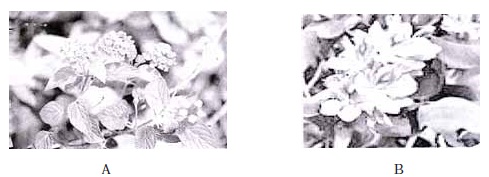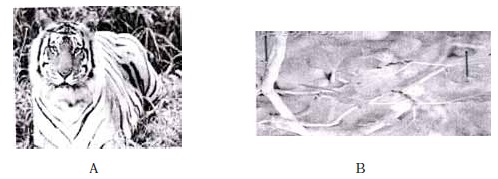Candidates can download NCERT Exemplar Class 12 Biology Chapter 15 from this page. The exemplar has been provided by the National Council of Educational Research & Training (NCERT) and the candidates can check it from below for free of cost. It contains objective, very short answer type, short answer type, and long answer type questions. Along with it, the answer for each question has also been provided. From the NCERT Exemplar Class 12 Biology Chapter 15, candidates can understand the level and type of questions that are asked in the exam.
NCERT Exemplar Class 12 Biology Chapter 15 Biodiversity and Conservation
NCERT Class 12 Biology Chapter 15 is for Biodiversity and Conservation. The type of questions that will be asked from NCERT Class 12 Biology Chapter 15 are displayed in the below provided NCERT Exemplar Class 12 Biology Chapter 15. With the help of it, candidates can prepare well for the examination.
Also Check: NCERT Solutions for Class 12 Biology
Multiple Choice Questions
- Which of the following countries has the highest biodiversity?
a. South America
b. South Africa
c. Russia
d. India - Which of the following is not a cause for loss of biodiversity?
a. Destruction of habitat
b. Invasion by alien species
c. Keeping animals in zoological parks
d. Over-exploitation of natural resources - Which of the following is not an invasive alien species in the Indian context?
a. Lantana
b. Cynodon
c. Parthenium
d. Eichhornia - Where among the following will you find pitcher plant?
a. Rain forest of North-East India
b. Sunderbans
c. Thar Desert
d. Western Ghats - Which one of the following is not a major characteristic feature of biodiversity hot spots?
a. Large number of species
b. Abundance of endemic species
c. Large number of exotic species
d. Destruction of habitat - Match the animals given in column A with their location in column B:
Column A Column B (i) Dodo (a) Africa (ii) Quagga (b) Russia (iii) Thylacine (c) Mauritius (iv) Stellar’s sea cow (d) Australia Choose the correct match from the following:
(a) i-a, ii-c, iii-b, iv-d
(b) i-d, ii-c, iii-a, iv-b
(c) i-c, ii-a, iii-b, iv-d
(d) i-c, ii-a, iii-d, iv-b - What is common to the following plants: Nepenthes, Psilotum, Rauwolfia and Aconitum?
a. All are ornamental plants
b. All are phylogenic link species
c. All are prone to over exploitation
d. All are exclusively present in the Eastern Himalayas. - The one-horned rhinoceros is specific to which of the following sanctuary
a. Bhitar Kanika
b. Bandipur
c. Kaziranga
d. Corbett park - Amongst the animal groups given below, which one has the highest percentage of endangered species?
a. Insects
b. Mammals
c. Amphibians
d. Reptiles - Which one of the following is an endangered plant species of India?
a. Rauwolfia serpentina
b. Santalum album (Sandal wood)
c. Cycas beddonei
d. All of the above - What is common to Lantana, Eichhornia and African catfish?
a. All are endangered species of India.
b. All are key stone species.
c. All are mammals found in India.
d. All the species are neither threatened nor indigenous species of India. - The extinction of passenger pigeon was due to:
a. Increased number of predatory birds.
b. Over exploitation by humans.
c. Non-availability of the food.
d. Bird flu virus infection. - Which of the following statements is correct?
a. Parthenium is an endemic species of our country.
b. African catfish is not a threat to indigenous catfishes.
c. Steller’s sea cow is an extinct animal.
d. Lantana is popularly known as carrot grass. - Among the ecosystem mentioned below, where can one find maximum biodiversity?
a. Mangroves
b. Desert
c. Coral reefs
d. Alpine meadows - Which of the following forests is known as the ‘lungs of the planet Earth’?
a. Tiaga forest
b. Tundra forest
c. Amazon rain forest
d. Rain forests of North East India - The active chemical drug reserpine is obtained from:
a. Datura
b. Rauwolfia
c. Atropa
d. Papaver - Which of the following group of plants exhibit more species diversity?
a. Gymnosperms
b. Algae
c. Bryophytes
d. Fungi - Which of the below mentioned regions exhibit less seasonal variations?
a. Tropics
b. Temperates
c. Alpines
d. Both (a) & (b) - The historic convention on Biological Diversity held in Rio de Janeiro in 1992 is known as:
a. CITES Convention
b. The Earth Summit
c. G-16 Summit
d. MAB Programme - What is common to the techniques (i) in vitro fertilisation, (ii) Cryo preservation and (iii) tissue culture?
a. All are in situ conservation methods.
b. All are ex situ conservation methods.
c. All require ultra modern equipment and large space.
d. All are methods of conservation of extinct organisms.
Very Short Answer Type Questions
- What characteristics make a community stable?
- What could have triggered mass extinctions of species in the past?
- What accounts for the greater ecological diversity of India?
- According to David Tilman, greater the diversity, greater is the primary productivity. Can you think of a very low diversity man-made ecosystem that has high productivity?
- What does ‘Red’ indicate in the IUCN Red list (2004)?
- Explain as to how protection of biodiversity hot spots alone can reduce up to 30% of the current rate of species extinction.
- What is the difference between endemic and exotic species?
- How does species diversity differ from ecological diversity?
- Why is genetic variation important in the plant Rauwolfia vomitoria?
- What is Red Data Book?
- Define gene pool.
- What does the term ‘Frugivorous’ mean?
- What is the expanded form of IUCN?
- Define the terms (i) Bioprospecting (ii) Endemism
- What is common to the species shown in figures A and B?

- What is common to the species shown in figures A and B?

Short Answer Type Questions
- How is the presently occurring species extinction different from the earlier mass extinctions?
- Of the four major causes for the loss of biodiversity (Alien species invasion, habitat loss and fragmentation, over-exploitation and co-extinctions which according to you is the major cause for the loss of biodiversity? Give reasons in support.
- Discuss one example, based on your day-to-day observations, showing how loss of one species may lead to the extinction of another.
- A species-area curve is drawn by plotting the number of species against the area. How is it that when a very large area is considered the slope is steeper than that for smaller areas?
- Is it possible that productivity and diversity of a natural community remain constant over a time period of, say one hundred years?
- There is greater biodiversity in tropical /subtropical regions than in temperate region. Explain.
- Why are the conventional methods not suitable for the assessment of biodiversity of bacteria?
- What criteria should one use in categorizing a species as threatened?
- What could be the possible explanation for greater vulnerability of amphibians to extinction as compared to other animal groups?
- How do scientists extrapolate the total number of species on Earth?
- Humans benefit from diversity of life. Give two examples.
- List any two major causes other than anthropogenic causes of the loss of biodiversity.
- What is an endangered species? Give an example of an endangered plant and animal species each?
- What are sacred groves and their role in biodiversity conservation?
- Suggest a place where one can go to study coral reefs, mangrove vegetation and estuaries.
- Is it true that there is more solar energy available in the tropics? Explain briefly.
- What is co-extinction? Explain with a suitable example?
Long Answer Type Questions
- Elaborate how invasion by an alien species reduces the species diversity of an area.
- How can you, as an individual, prevent the loss of biodiversity?
- Can you think of a scientific explanation, besides analogy used by Paul Ehrlich, for the direct relationship between diversity and stability of an ecosystem?
- Though the conflict between humans and wildlife started with the evolution of man, the intensity of conflict has increased due to the activities of modern man. Justify your answer with suitable examples.
- What is an ecosystem service? List any four important ecosystem services provided by the natural ecosystems. Are you in favour or against levying a charge on the service provided by the ecosystem?
- Describe the consumptive use value of biodiversity as food, drugs and medicines, fuel and fiber with suitable examples.
- Species diversity decreases as we move away from the equator towards the poles. What could be the possible reasons?
- Explain briefly the ‘rivet popper hypothesis’ of Paul Ehrlich.
- The relation between species richness and area for a wide variety of taxa turns out to be a rectangular hyperbola. Give a brief explanation.
| « Previous | Next » |
Answers to Multiple Choice Questions
| 1-a | 2-c | 3-b | 4-a | 5-d | 6-d |
| 7-c | 8-c | 9-c | 10-d | 11-d | 12-b |
| 13-b | 14-c | 15-c | 16-b | 17-d | 18-a |
| 19-b | 20-b |
Biology Physics Chemistry Maths
To get study material, exam alerts and news, join our Whatsapp Channel.


